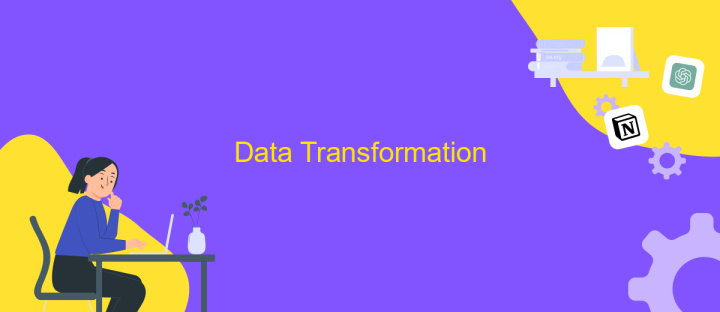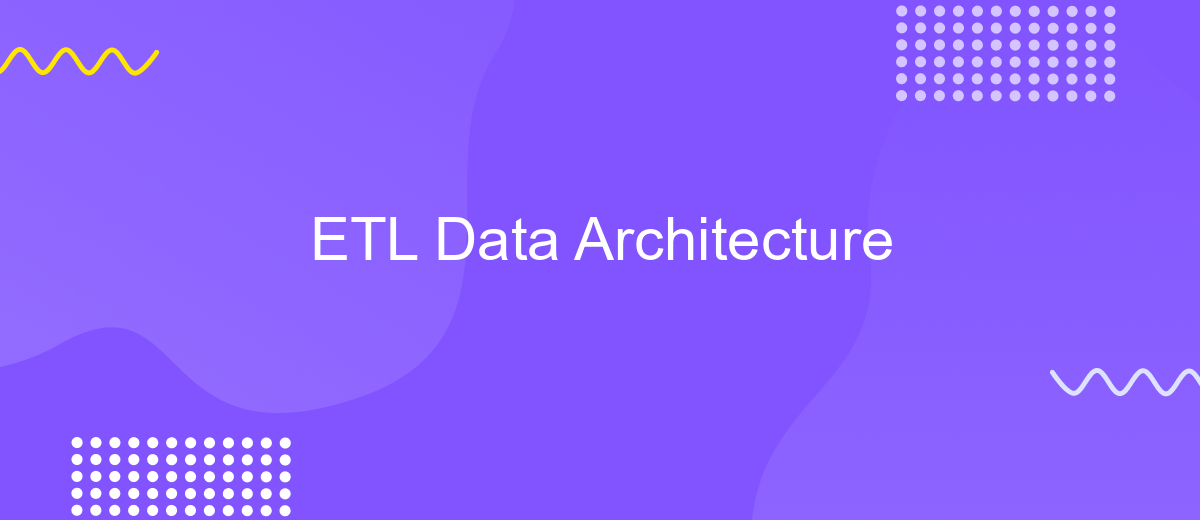ETL Data Architecture
ETL (Extract, Transform, Load) data architecture is a cornerstone of modern data management, enabling organizations to efficiently gather, process, and integrate data from various sources. This process ensures that data is clean, consistent, and readily available for analysis and decision-making. In this article, we will explore the key components and best practices of ETL data architecture to optimize your data workflows.
ETL Overview
ETL (Extract, Transform, Load) is a crucial process in data management and integration. It involves extracting data from various sources, transforming it into a suitable format, and loading it into a target database or data warehouse. This process ensures that data is accurate, consistent, and ready for analysis.
- Extract: Data is collected from multiple sources, such as databases, APIs, and flat files.
- Transform: The extracted data is cleaned, validated, and converted into a uniform format.
- Load: The transformed data is then loaded into a target system, such as a data warehouse or a data lake.
Modern ETL tools and services, like ApiX-Drive, simplify the integration process by providing automated workflows and real-time data synchronization. These tools help organizations streamline their data pipelines, reduce manual intervention, and ensure data accuracy. By leveraging such services, businesses can focus on deriving insights and making data-driven decisions.
Data Extraction

Data extraction is the initial phase in the ETL process, where raw data is collected from various sources such as databases, APIs, and flat files. This step is crucial as it ensures that the data is accurately gathered and ready for transformation. Efficient extraction methods are essential to minimize latency and ensure data integrity. Different extraction techniques, like full extraction, incremental extraction, and change data capture, can be employed based on the requirements and nature of the source data.
Modern tools and services, such as ApiX-Drive, facilitate seamless data extraction by providing pre-built integrations with numerous data sources. ApiX-Drive allows users to set up automated workflows, reducing the complexity and time required for manual data extraction processes. By leveraging such services, organizations can streamline their data pipeline, ensuring timely and accurate data collection for subsequent transformation and loading stages. This not only enhances operational efficiency but also ensures that the data remains consistent and reliable throughout the ETL process.
Data Transformation

Data transformation is a crucial phase in the ETL process, where raw data is converted into a meaningful format for analysis. This step involves several operations to ensure data quality and consistency, making it ready for storage and further use.
- Data Cleaning: This involves removing duplicates, correcting errors, and handling missing values to ensure data accuracy.
- Data Integration: Combining data from various sources into a unified view. Tools like ApiX-Drive can simplify this process by automating data integration tasks.
- Data Enrichment: Enhancing data by adding relevant information from external sources to provide more context and value.
- Data Aggregation: Summarizing data to provide a consolidated view, useful for generating reports and insights.
- Data Formatting: Converting data into the required format, such as changing date formats or standardizing units of measurement.
Effective data transformation ensures that the data is accurate, consistent, and ready for analysis. Utilizing services like ApiX-Drive can streamline the integration process, allowing for seamless data flow between different systems and applications. This ultimately leads to more reliable and actionable insights, driving better decision-making.
Data Loading

Data loading is a crucial step in the ETL process, where transformed data is transferred into the target data warehouse or database. This step ensures that the data is available for analysis and reporting, providing valuable insights for decision-making. The efficiency and accuracy of the data loading process directly impact the overall performance of the data architecture.
There are various methods for loading data, including batch loading, real-time loading, and incremental loading. Each method has its own advantages and challenges, depending on the specific requirements of the organization. Choosing the right data loading strategy is essential for optimizing performance and maintaining data integrity.
- Batch Loading: Suitable for large volumes of data, performed at scheduled intervals.
- Real-Time Loading: Ensures immediate data availability, ideal for time-sensitive applications.
- Incremental Loading: Updates only the changed data, reducing load times and resource usage.
ApiX-Drive is a powerful tool that simplifies the data loading process by automating integrations between various applications and databases. It supports multiple loading methods, allowing organizations to choose the most appropriate strategy for their needs. By leveraging ApiX-Drive, businesses can streamline their data workflows, ensuring timely and accurate data delivery.
ETL Process Management
Effective ETL process management is crucial for ensuring the seamless extraction, transformation, and loading of data from various sources into a centralized data warehouse. This involves meticulously planning and scheduling ETL jobs, monitoring their execution, and handling any errors or exceptions that arise. Utilizing robust ETL tools and platforms can significantly enhance the efficiency and reliability of this process. One such tool is ApiX-Drive, which facilitates the integration of various applications and services, thereby streamlining data flows and reducing manual intervention.
ApiX-Drive offers a user-friendly interface for configuring and managing data integrations, making it easier for businesses to automate their ETL processes. By leveraging ApiX-Drive's capabilities, organizations can ensure that data is consistently and accurately transferred between systems, minimizing the risk of data loss or corruption. Furthermore, ApiX-Drive provides real-time monitoring and alerting features, enabling prompt identification and resolution of any issues that may impact the ETL workflow. This leads to more efficient data management and supports better decision-making based on reliable data insights.
FAQ
What is ETL in Data Architecture?
Why is ETL important for data warehousing?
What are the common challenges in ETL processes?
How can ETL processes be automated?
What are the key components of an ETL system?
Time is the most valuable resource for business today. Almost half of it is wasted on routine tasks. Your employees are constantly forced to perform monotonous tasks that are difficult to classify as important and specialized. You can leave everything as it is by hiring additional employees, or you can automate most of the business processes using the ApiX-Drive online connector to get rid of unnecessary time and money expenses once and for all. The choice is yours!

